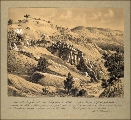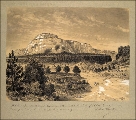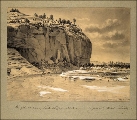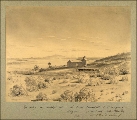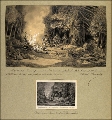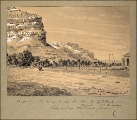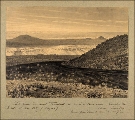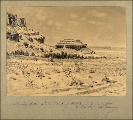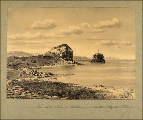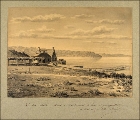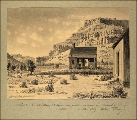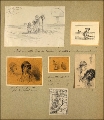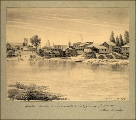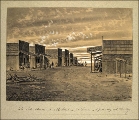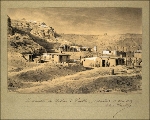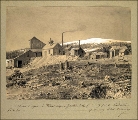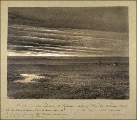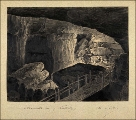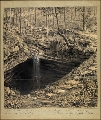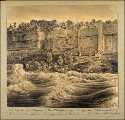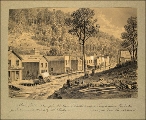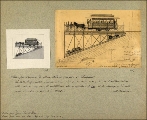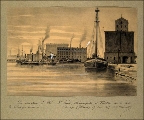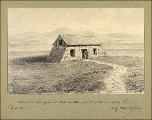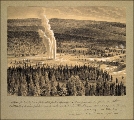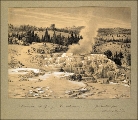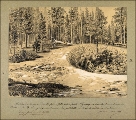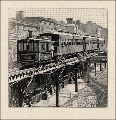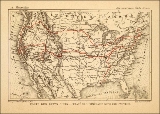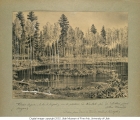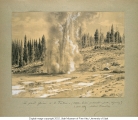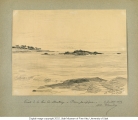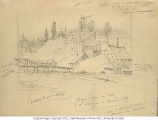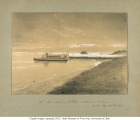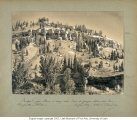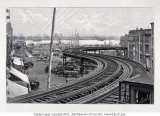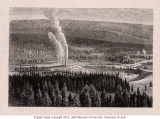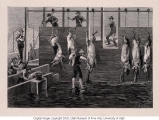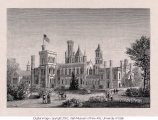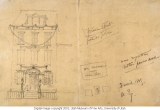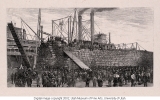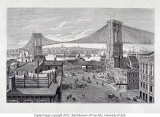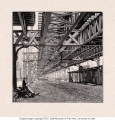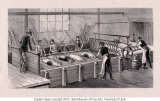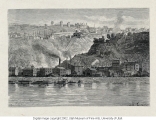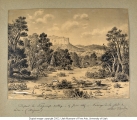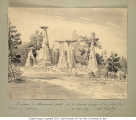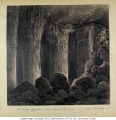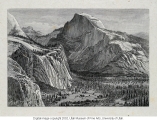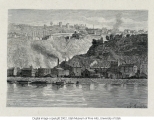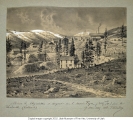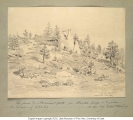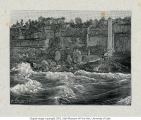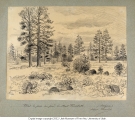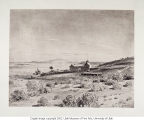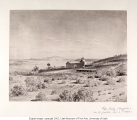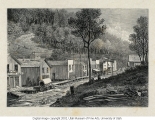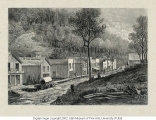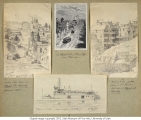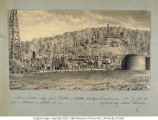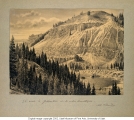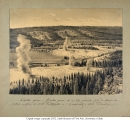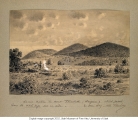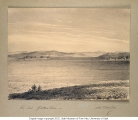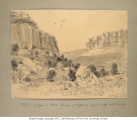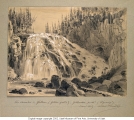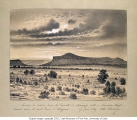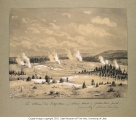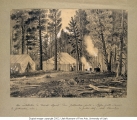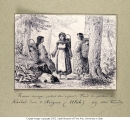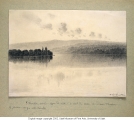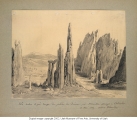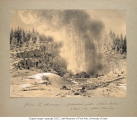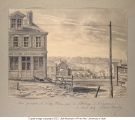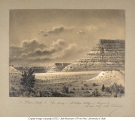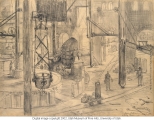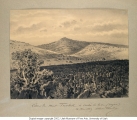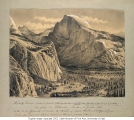| Identifier |
1978_264_chinatownMadera.jpg |
| Title |
Houses of the Chinese in Madera, California |
| Alternate Title |
La ville chinoise à Madera, Californie |
| Creator |
Tissandier, Albert 1839-1906 |
| Subject |
Chinese--Structures--California--Madera--1880-1890; Wooden buildings--California--Madera--1880-1890; Neighborhoods--California--Madera--1880-1890; Cities & towns--California--Madera--1880-1890; Cityscape drawings--1880-1890 |
| Published Location |
Reproduced in the exhibition catalog, Albert Tissandier : Drawings of nature and industry in the United States, 1885, by Mary F. Francey ([Salt Lake City, UT] : Utah Museum of Fine Arts, 2001), p. 51. |
| Short Essay |
California's rapid growth resulted in demand for technological development and better connection to the Midwestern and Eastern States. By 1850 the gold rush had subsided and California had achieved statehood. Logically, the economy seemed best supported by agriculture. Production of abundant crops of barley, wheat and a variety of fruit required efficient shipping and export procedures, a demand that was met when California's first railroad, the Central Pacific, began construction in 1869 creating a demand for labor. Unemployed Chinese miners easily solved the need for 5,000 railroad workers. Existence of anti-Chinese employment groups did not deter railroad project leaders from hiring the immigrants who worked hard for long hours for minimal pay. They were efficient, patient and always on time, qualities their employers valued. While working on railroad construction, the Chinese camped in tents alongside the work site. Those who stayed there created the Chinese community in Madera that caught Tissandier's attention. He recognized the grim reality of their existence in the United States where, unlike immigrants from Europe and Ireland, they were not accepted. Tissandier's reaction was different: "My reaction to the Chinese is that they work for meager wages, and they save what little they earn. Americans say they have done their compatriots a disservice by encouraging people who work for such low salaries that Americans would not do, and that they finally export their dollars to China without leaving any here. Nevertheless, one can easily see the useful work done by the Chinese. They accept the most laborious of tasks and complete them satisfactorily without complaint." This drawing shows a row of six small wooden buildings with five others that stand directly across a road, making up the living and business quarters for the minority community. Tissandier did not dwell on figural representation, rather he concentrated on the character of the small structures, the living conditions they imply and the social status of the occupants within American society. |
| Publisher |
Utah Museum of Fine Arts |
| Contributors |
Mary F. Francey |
| Date |
1885-07-06 |
| Type |
Image |
| Format |
application/pdf |
| Source |
Albert Tissandier: Drawings of Nature and Industry in the United States |
| Language |
fra |
| Rights Management |
Digital image c2001 Utah Museum of Fine Arts, University of Utah |
| Source Physical Dimensions |
33.02 cm High x 40.64 cm Wide |
| Source Characteristics |
Graphite and brush applied ink on paper |
| Light Source |
Kaiser Softlite ProVision 6x55W flourescent 5400K daylight |
| Archival Resolution |
TIFF: 4993 x 4223 pixels |
| Display Resolution |
JPEG: 900 x 718 pixels |
| Bit Depth |
36-bit color |
| Scanning Device |
Leica S1 Pro scanning camera; Hasselblad CFi 50mm F/4 lens; f/11 |
| Exhibit Catalog |
ISBN: 0-9657215-0-7; Library of Congress Catalog Number: 2001094211 |
| Setname |
uu_umfa_at |
| ID |
415811 |
| Reference URL |
https://collections.lib.utah.edu/ark:/87278/s6bk1cds/415811 |

